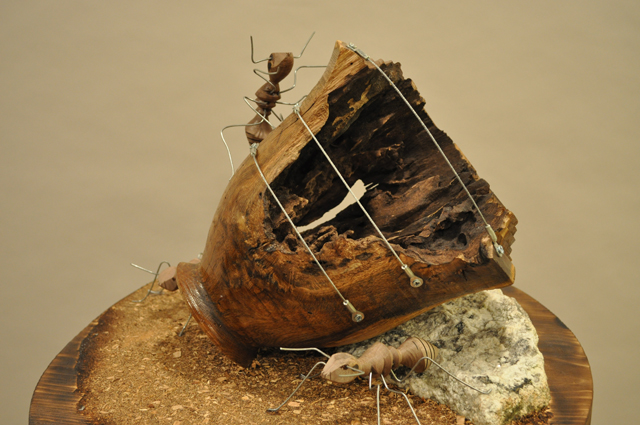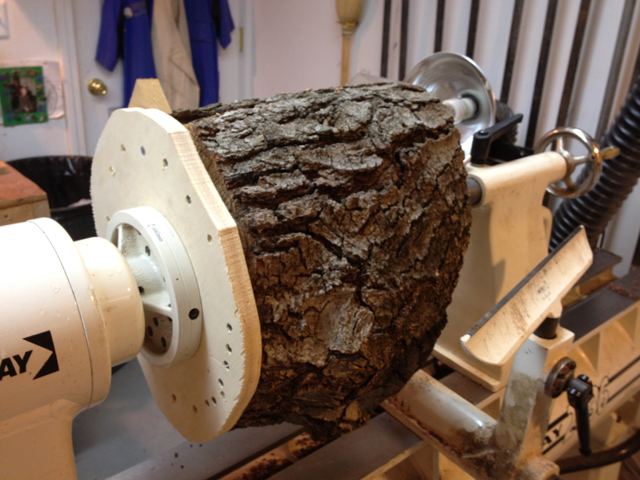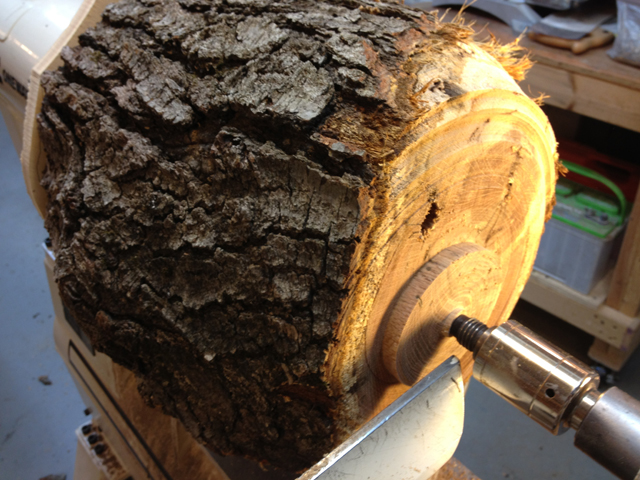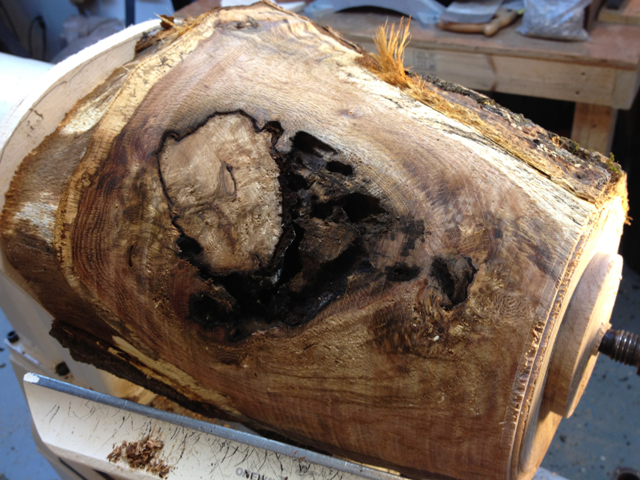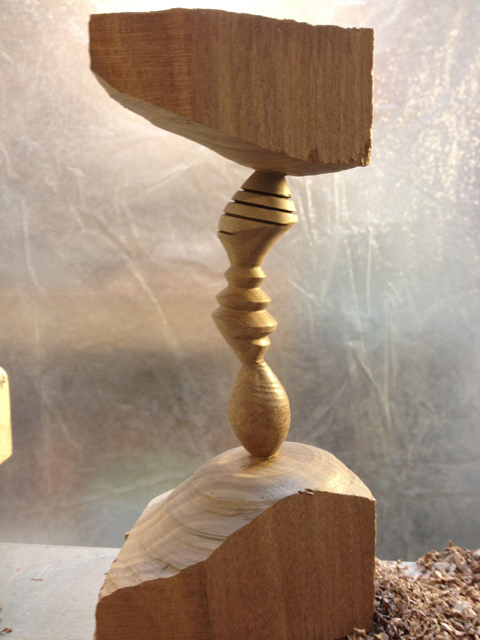About this piece...
I was splitting wood by hand just for fun one day, when I came across a hollowed out oak log.
The inside had been excavated by ants, yet there was solid wood around the perimeter. I decided to turn the piece, making
a vessel that was hollowed by the ants and turned on the outside by me.
To mount the hollow log on the lathe, I attached a plywood disc to a faceplate,
then screwed the disc to the solid material that remained around the perimeter of the log.
At the tailstock end, I formed a tenon.
The turning continued...
The piece was turned around so that the tenon was held in the chuck. I continued
to shape the outside, as large loose chunks of decayed wood flew from the lathe. A face mask is a must!
"Humpty Dumpty" took on a life of its own. At first, I planned on only making the vessel
itself. But one thing led to another: after the vessel was made, I wanted to present it as though it had fallen; then I wanted
to add ants to the scene and glue down some of the wood shavings to simulate the ants' excavation. Originally, I bought
a package of small plastic ants, which I was going to scatter around the piece for dramatic effect. However, using production-made
plastic ants felt cheap and inauthentic. I decided to make the ants myself, which I did by turning each of the bodies from
walnut on three axes, then adding steel wire for the legs.
The ants were my first attempt at multi-axis turning.
As I was making this piece, I was absolutely
(though not surprisingly) haunted by the concept of impermanence. The nursery rhyme “Humpty Dumpty,” a simple
yet profound reminder of our own impermanence, came to mind:
Humpty Dumpty sat on a wall.
Humpty Dumpty had
a great fall.
All the king’s
horses and all the king’s men
Couldn’t put Humpty back together
again.
By extension, it points to the impermanence of not only ourselves, but of all things, including the earth itself.
If there is an upside to impermanence, it’s probably that thinking about it can prompt us to appreciate what we have
now. Invincibility, its opposite, is surely a grand illusion held by humans but not supported by nature.

